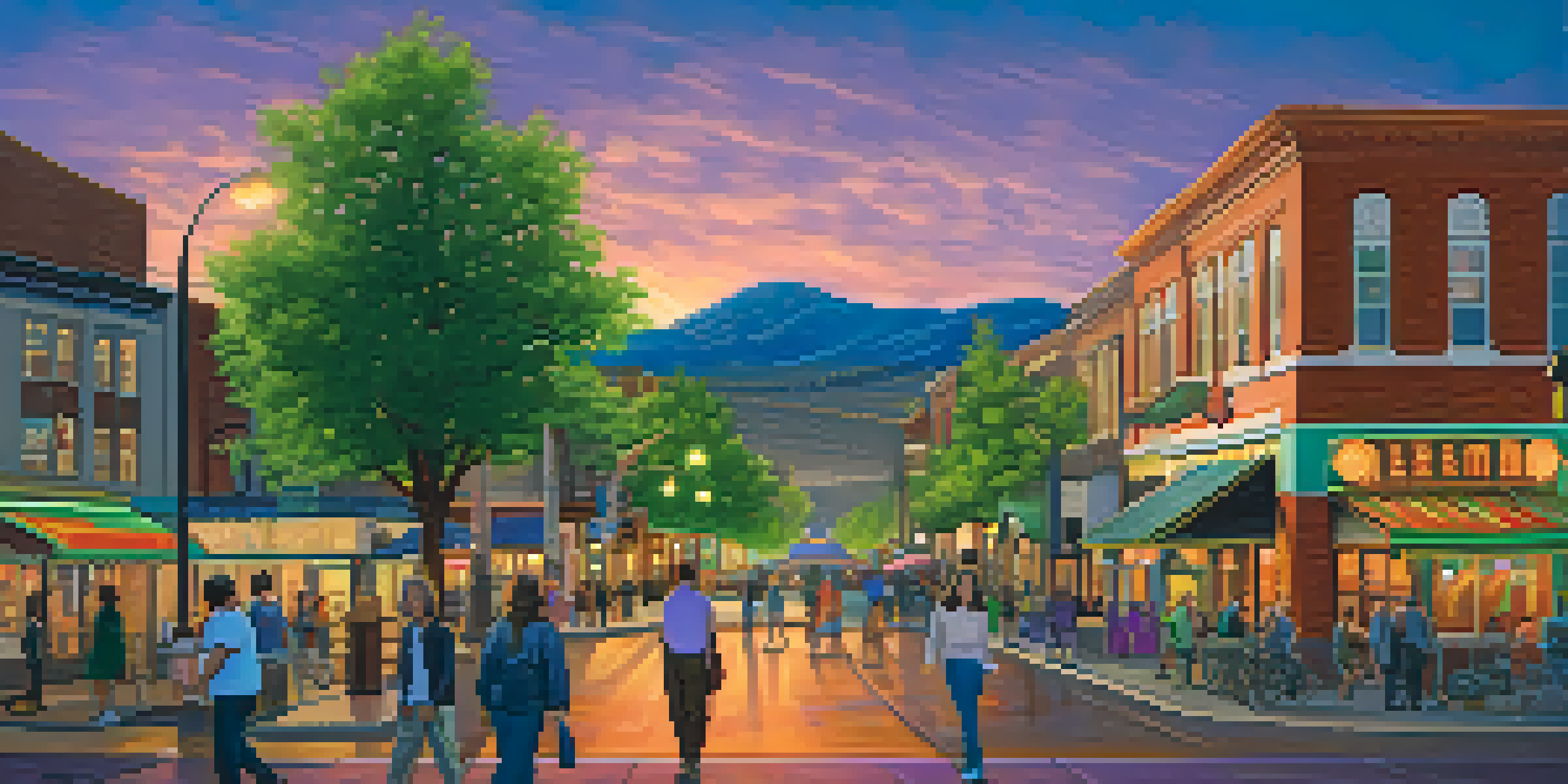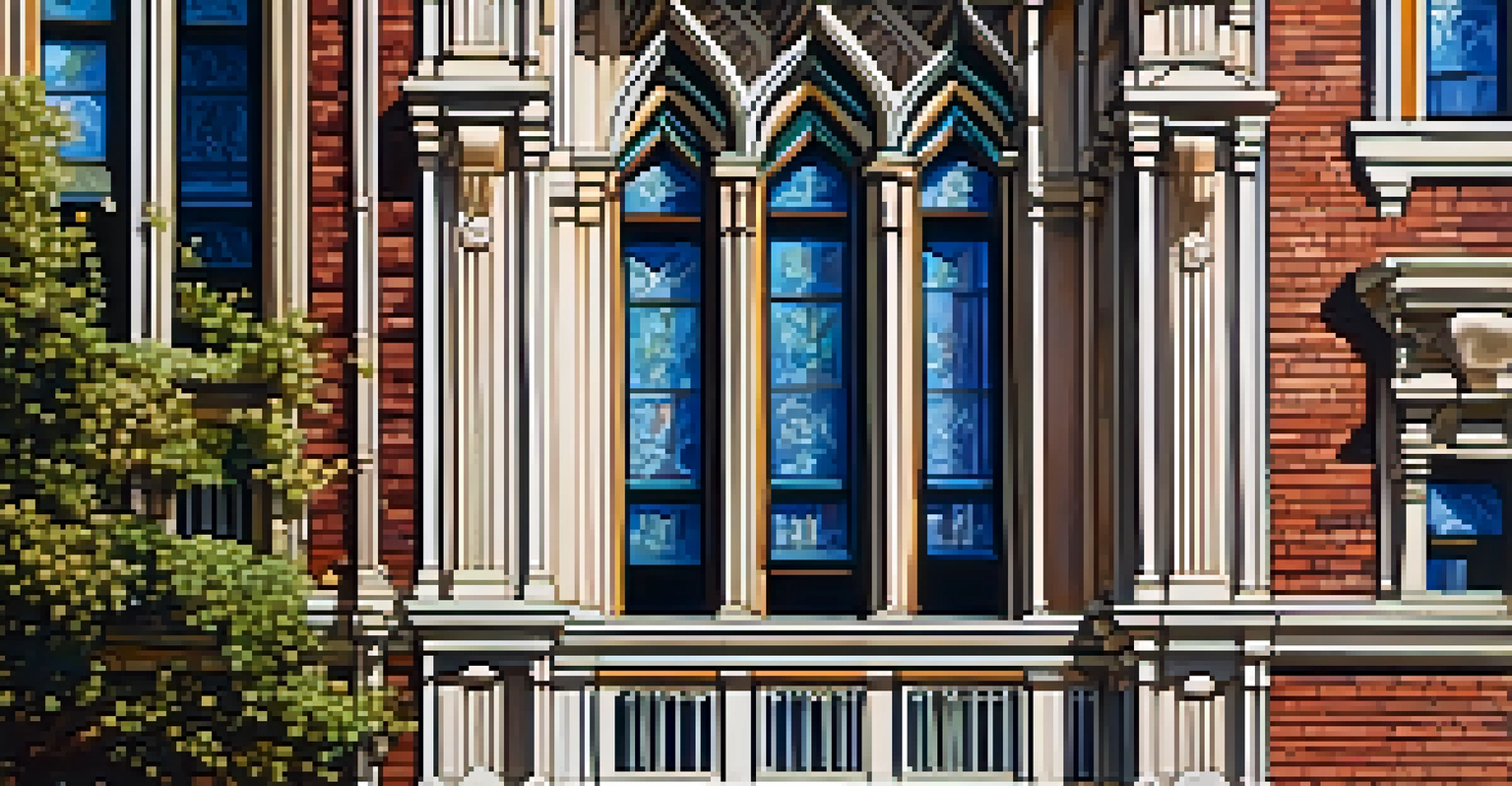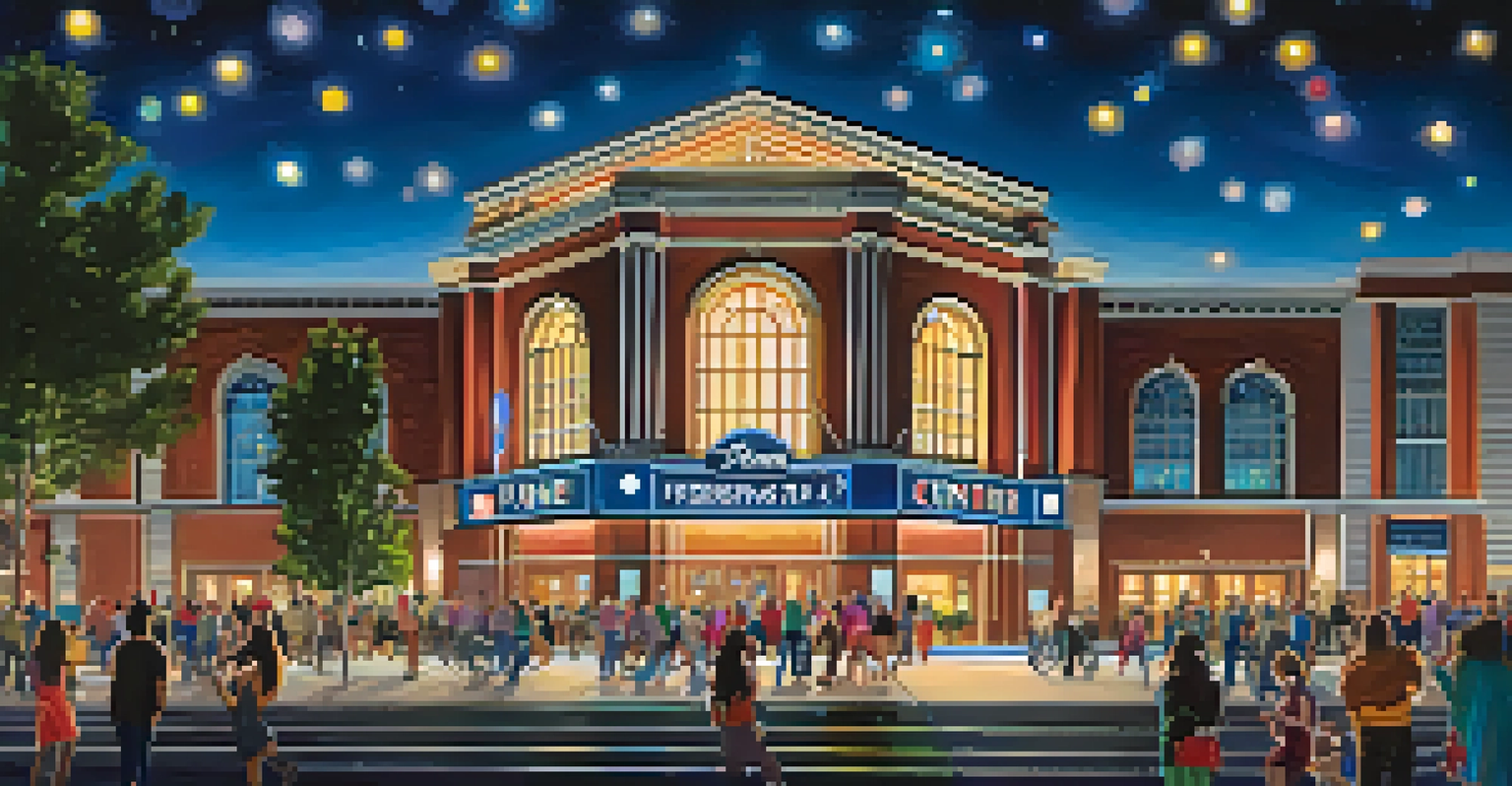Reno's Historic Architecture: A Reflection of Its Past

The Charm of Reno's Historic Downtown District
Reno's Historic Downtown District is a vibrant showcase of the city’s architectural evolution. Strolling through the streets, visitors are greeted by a blend of styles that tell stories of the past. From Art Deco buildings to classic brick facades, each structure has its own unique charm and history.
Architecture is the learned game, correct and magnificent, of forms assembled in the light.
One standout example is the iconic Reno Arch, a symbol of the city that has welcomed countless visitors since the early 20th century. This dazzling arch not only serves as a photo op but also embodies the spirit of Reno's growth and transformation. It’s easy to see why this area is a focal point for both tourists and locals alike.
As you explore further, you'll notice how the architecture reflects the city's transition from a small railroad town to a bustling urban center. Each building contributes to a narrative that highlights Reno's resilience and adaptability throughout the years.
Architectural Styles That Define Reno
Reno boasts a fascinating mix of architectural styles that reveal its diverse cultural influences. The late 19th century brought Victorian and Romanesque Revival styles, which are evident in several well-preserved buildings. These styles often feature intricate details and ornate designs that captivate the eye.

As the city expanded in the early 20th century, the Arts and Crafts Movement made its mark. This led to the creation of structures that emphasized craftsmanship and natural materials, offering a warm contrast to the industrial vibe of the era. The combination of these styles showcases Reno’s rich architectural palette.
Reno's Architectural Evolution
Reno's Historic Downtown District showcases a vibrant mix of architectural styles that reflect the city's rich history and transformation.
Today, enthusiasts and historians alike appreciate this variety, as it enriches the city’s character. Understanding these styles not only enhances our appreciation of the buildings themselves but also connects us to the social and economic forces that shaped Reno.
The Impact of the Great Depression on Reno's Architecture
The Great Depression had a profound impact on Reno's architectural landscape, shaping the city in unexpected ways. During this challenging time, many buildings were constructed with a focus on practicality and affordability. This shift led to the rise of simpler designs that still retained a sense of dignity and purpose.
Preservation creates a sense of place, a sense of community, and a sense of history.
One notable example is the construction of the Washoe County Courthouse, which was completed during the 1930s. Its Art Deco style reflects both the economic realities of the time and a desire for civic pride. The courthouse serves as a reminder of resilience in the face of adversity.
By examining this period, we can see how architecture not only reflects economic conditions but also the community's spirit. Reno's buildings from this era tell a story of survival and adaptation, which resonates even today.
Preservation Efforts: Protecting Reno's Architectural Heritage
In recent years, there has been a growing movement to preserve Reno's historic architecture. Local organizations and community members are working tirelessly to protect buildings that hold cultural significance. This effort not only safeguards history but also enhances community identity.
Preservation initiatives often involve renovating old structures while maintaining their historical integrity. This approach allows for modern use without losing the essence of what makes these buildings special. The result is a harmonious blend of the old and new, creating spaces that serve the community.
Preservation of Historic Buildings
Community efforts are crucial in preserving Reno's architectural heritage, ensuring that historical structures are maintained while serving modern needs.
These efforts are crucial, as they remind us of the importance of heritage in shaping our cities. By valuing and preserving the past, Reno can continue to thrive while honoring its unique architectural legacy.
Iconic Landmarks: Symbols of Reno's History
Reno is home to several iconic landmarks that serve as symbols of its rich history. The Pioneer Center for the Performing Arts, with its distinctive design, has been a cultural hub since the mid-20th century. It represents the city’s commitment to the arts and community engagement.
Another landmark, the historic Riverside Hotel, offers a glimpse into Reno's glamorous past during the heyday of the casino industry. Its elegant architecture and prime location along the Truckee River make it a treasured part of the city's landscape. These landmarks not only attract tourists but also foster local pride.
Visiting these sites allows residents and visitors alike to connect with Reno's vibrant history. They stand as testaments to the city’s evolution and the stories that shaped its identity.
The Role of Community in Celebrating Architectural Heritage
Community engagement plays a vital role in celebrating and preserving Reno's architectural heritage. Local events, such as historical walking tours and preservation workshops, provide opportunities for residents to learn about their city’s past. These gatherings foster a sense of pride and connection among community members.
In addition, collaborations between local artists and historians have led to creative projects that highlight architectural features. Murals and public art installations often draw inspiration from historical buildings, breathing new life into these structures. This intersection of art and history enriches the cultural landscape of Reno.
Future of Sustainable Architecture
Reno's architectural future focuses on sustainable development that respects historical context, blending innovation with its rich heritage.
Ultimately, it’s the community's enthusiasm and commitment that ensures the preservation of Reno’s architectural treasures. By participating in these initiatives, residents not only honor the past but also shape the future of their city.
Looking Ahead: Reno's Architectural Future
As Reno continues to grow and evolve, its architectural future remains bright. With a focus on sustainable development, new buildings are being designed with an eye toward environmental responsibility while respecting the existing historical context. This thoughtful approach fosters a balance between progress and preservation.
Innovative designs that incorporate green spaces alongside historic structures are emerging. This trend not only enhances the aesthetic appeal of the city but also promotes community well-being. It’s a win-win for both residents and the environment.

Looking ahead, Reno's architectural journey promises to be an exciting blend of the past and future. By embracing its rich history while adapting to modern needs, Reno can continue to be a vibrant city that honors its roots.